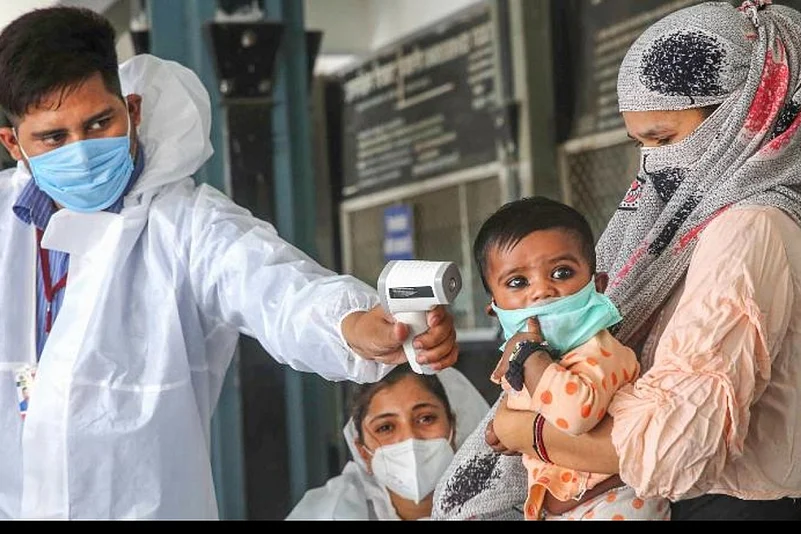From a peak of 12,000+ at end of May, the numbers of daily Covid-19 positive cases in Odisha have come down to under 2,000 now. During the same period, the test positivity rate (TPR) in the state has gone down to just 2.14, suggesting the second wave of the pandemic is finally petering off. But if the Odisha government is still unable to breathe easily, there are two main reasons for it. First, even as the number of fresh coronavirus cases are on a steady decline in the rest of the state, Khurda and Cuttack districts continue to report a high number of cases. Second, over 90 per cent of the new cases are being reported to belong to the deadly Delta variant, which remains active for three to four weeks instead of the usual two.
On Friday, a total of 1,917 positive cases were reported from the 30 districts of Odisha. Of these, Khurda and Cuttack reported 518 and 256 respectively, adding up to 774 and accounting for over one-third of the total cases reported from across the state. In particular, the capital city of Bhubaneswar, part of the Khurda district, has reported 400-500 cases every day for the last several weeks and has proved to be a constant headache for the health department. The high number of cases reported in the city has no clear explanation because 100% of its population has received at least the first dose of the vaccine while over 60% have received both doses even as inoculation in the rest of the state has suffered badly due to lack of adequate supply of the vaccine.
Health officials try to explain away this dichotomy by pointing to the fact the city has a large floating population not just because it is the state capital but also because many of the Covid treatment facilities are located here. In a recent press briefing, chief secretary Suresh Mohapatra said while the risk of death or hospitalization is minimal in cases of those who get a breakthrough infection even after being vaccinated, they unwittingly help spread the virus by not following Covid appropriate behaviour. Whatever the actual reason(s), there is little doubt that health officials have failed to come up with an appropriate response to bring down the rate of infection in the Bhubaneswar Cuttack Twin City.
While the constant fall in the number of fresh cases and the TPR is a huge relief for health planners, the fact that the virus is remaining active in the body of the infected for much longer than usual is a big cause for concern. “Unlike in the first phase, the initial days of the second wave, the infection and viral load in patients are remaining active for 20 days and in some cases for a month, possibly due to the Delta variant that is dominant in Odisha. This could be the reason why the virus is still spreading in the community. Patients think they are safe to come out after completing the mandatory 14-day quarantine. But they don’t realise the virus is still active in their body and thus help spread the disease,” says Dr. Ajay Parida, the Director of the Bhubaneswar based Institute of Life Sciences (ILS), which is engaged in genome sequencing of Covid cases from four states.
















